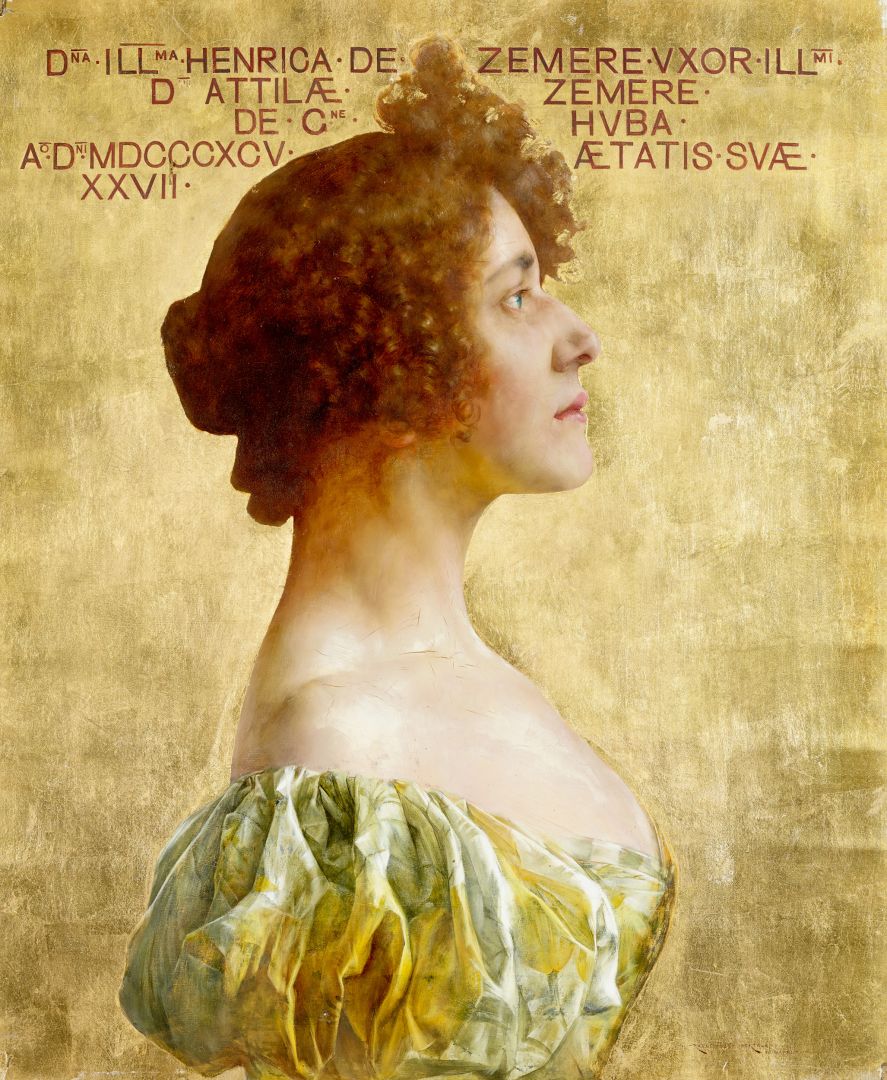Hall 3 - 5. view
Henrica Szemere
KARLOVSZKY, BERTALAN (1858–1938)
Henrica Szemere, 1895
oil on canvas, 55x45 cm; marking at the bottom right: Karlovszky Bertalan Budapest; inscription at the bottom: D[OMI]NA ILL[USTRISSI]MA HENRICA DE ZEMERE UXOR ILL[USTRISSI]MI D[OMI]NI ATTILAE ZEMERE DE G[ENE]RE HUBA A[NN]O D[OMI]NI MDCCCXCV AETATIS SUAE XXVII
Fine Arts Collection, Inv. No.: 74.54.
The Latin inscription of the painting, which identifies the depicted individual, follows the centuries-old tradition of the nobility’s portrait galleries. At the same time, the presentation of the portrait perfectly matches the period of its creation while also channelling the spirit of the then new and nascent Art Nouveau style. The homogenous golden background and the photorealistic depiction of the young lady gives off the impression that the painting was not made in Budapest, but in Vienna, the Austrian capitol that was also one of the leading locales of the Art Nouveau movement.
Henrica Szemere, née Henrietta Morawitz, did indeed arrive at Hungary from Vienna. In 1891, she was married by Attila Szemere, son of Bertalan Szemere once played a leading role in political life. The couple settled down in Budapest. Her husband, who travelled around the globe and was a renowned art collector, was employed as a senior associate and later on co-owner of the newspaper Magyar Hírlap. In 1894 he also became the chairman of a coal mining company.
Bertalan Karlovszky was a popular portrait painter of the period whose depiction of Attila Szemere’s wife bears the level of solemnity that is expected for this social class, however the painting is far from devoid of novel executions. Knowing the oeuvre of the artist, it is certain that the use of Art Nouveau form language was implemented to meet the expectations of the depicted person. As such, Henrica Szemere is depicted as a self-conscious personality with a dual identity: the presentation expresses her Viennese roots, while the inscription is a testament to her marriage and Hungarian identity. As per tradition, the Latin inscription emphasizes the ancient origins of the Szemere family, which can be traced back to the line of the ancient tribe leader Huba.
This is an outstandingly beautiful painting, which was awarded a silver medal at the Paris World’s Fair in 1930. It was donated to the museum, along with several other artworks, by Henrica Szemere herself. Having been widowed for 25 years, she wished to place the relics in a town that had strong ties to the Szemere family and continued to hold up the memory of her father-in-law after his demise in 1869. Borsod County commissioned a representative portrait of Bertalan Szemere in 1870 and unveiled his full body bronze statue in the centre of Miskolc in 1906.
Andrea Pirint
